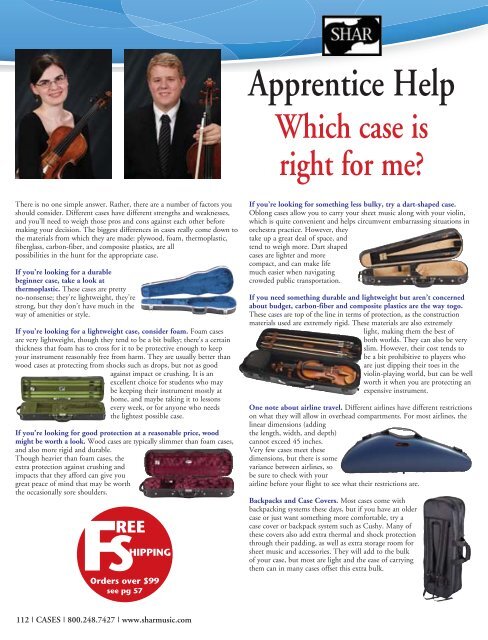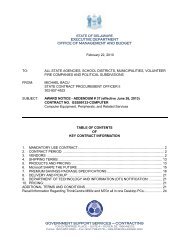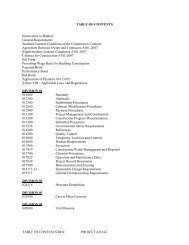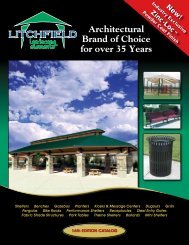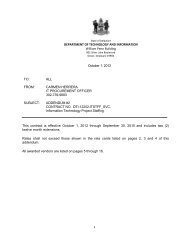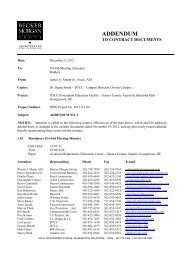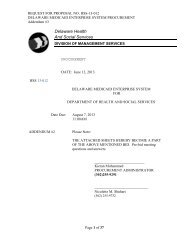You also want an ePaper? Increase the reach of your titles
YUMPU automatically turns print PDFs into web optimized ePapers that Google loves.
There is no one simple answer. Rather, there are a number of factors you<br />
should consider. Different cases have different strengths and weaknesses,<br />
and you’ll need to weigh those pros and cons against each other before<br />
making your decision. The biggest differences in cases really come down to<br />
the materials from which they are made: plywood, foam, thermoplastic,<br />
fiberglass, carbon-fiber, and composite plastics, are all<br />
possibilities in the hunt for the appropriate case.<br />
If you’re looking for a durable<br />
beginner case, take a look at<br />
thermoplastic. These cases are pretty<br />
no-nonsense; they’re lightweight, they’re<br />
strong, but they don’t have much in the<br />
way of amenities or style.<br />
If you’re looking for a lightweight case, consider foam. Foam cases<br />
are very lightweight, though they tend to be a bit bulky; there’s a certain<br />
thickness that foam has to cross for it to be protective enough to keep<br />
your instrument reasonably free from harm. They are usually better than<br />
wood cases at protecting from shocks such as drops, but not as good<br />
against impact or crushing. It is an<br />
excellent choice for students who may<br />
be keeping their instrument mostly at<br />
home, and maybe taking it to lessons<br />
every week, or for anyone who needs<br />
the lightest possible case.<br />
If you’re looking for good protection at a reasonable price, wood<br />
might be worth a look. Wood cases are typically slimmer than foam cases,<br />
and also more rigid and durable.<br />
Though heavier than foam cases, the<br />
extra protection against crushing and<br />
impacts that they afford can give you<br />
great peace of mind that may be worth<br />
the occasionally sore shoulders.<br />
<strong>FS</strong> Orders over $99<br />
see pg 57<br />
<strong>REE</strong><br />
HIPPING<br />
112 | CASES | 800.248.7427 | www.sharmusic.com<br />
Apprentice Help<br />
Which case is<br />
right for me?<br />
If you’re looking for something less bulky, try a dart-shaped case.<br />
Oblong cases allow you to carry your sheet music along with your violin,<br />
which is quite convenient and helps circumvent embarrassing situations in<br />
orchestra practice. However, they<br />
take up a great deal of space, and<br />
tend to weigh more. Dart shaped<br />
cases are lighter and more<br />
compact, and can make life<br />
much easier when navigating<br />
crowded public transportation.<br />
If you need something durable and lightweight but aren’t concerned<br />
about budget, carbon-fiber and composite plastics are the way togo.<br />
These cases are top of the line in terms of protection, as the construction<br />
materials used are extremely rigid. These materials are also extremely<br />
light, making them the best of<br />
both worlds. They can also be very<br />
slim. However, their cost tends to<br />
be a bit prohibitive to players who<br />
are just dipping their toes in the<br />
violin-playing world, but can be well<br />
worth it when you are protecting an<br />
expensive instrument.<br />
One note about airline travel. Different airlines have different restrictions<br />
on what they will allow in overhead compartments. For most airlines, the<br />
linear dimensions (adding<br />
the length, width, and depth)<br />
cannot exceed 45 inches.<br />
Very few cases meet these<br />
dimensions, but there is some<br />
variance between airlines, so<br />
be sure to check with your<br />
airline before your flight to see what their restrictions are.<br />
Backpacks and Case Covers. Most cases come with<br />
backpacking systems these days, but if you have an older<br />
case or just want something more comfortable, try a<br />
case cover or backpack system such as Cushy. Many of<br />
these covers also add extra thermal and shock protection<br />
through their padding, as well as extra storage room for<br />
sheet music and accessories. They will add to the bulk<br />
of your case, but most are light and the ease of carrying<br />
them can in many cases offset this extra bulk.


